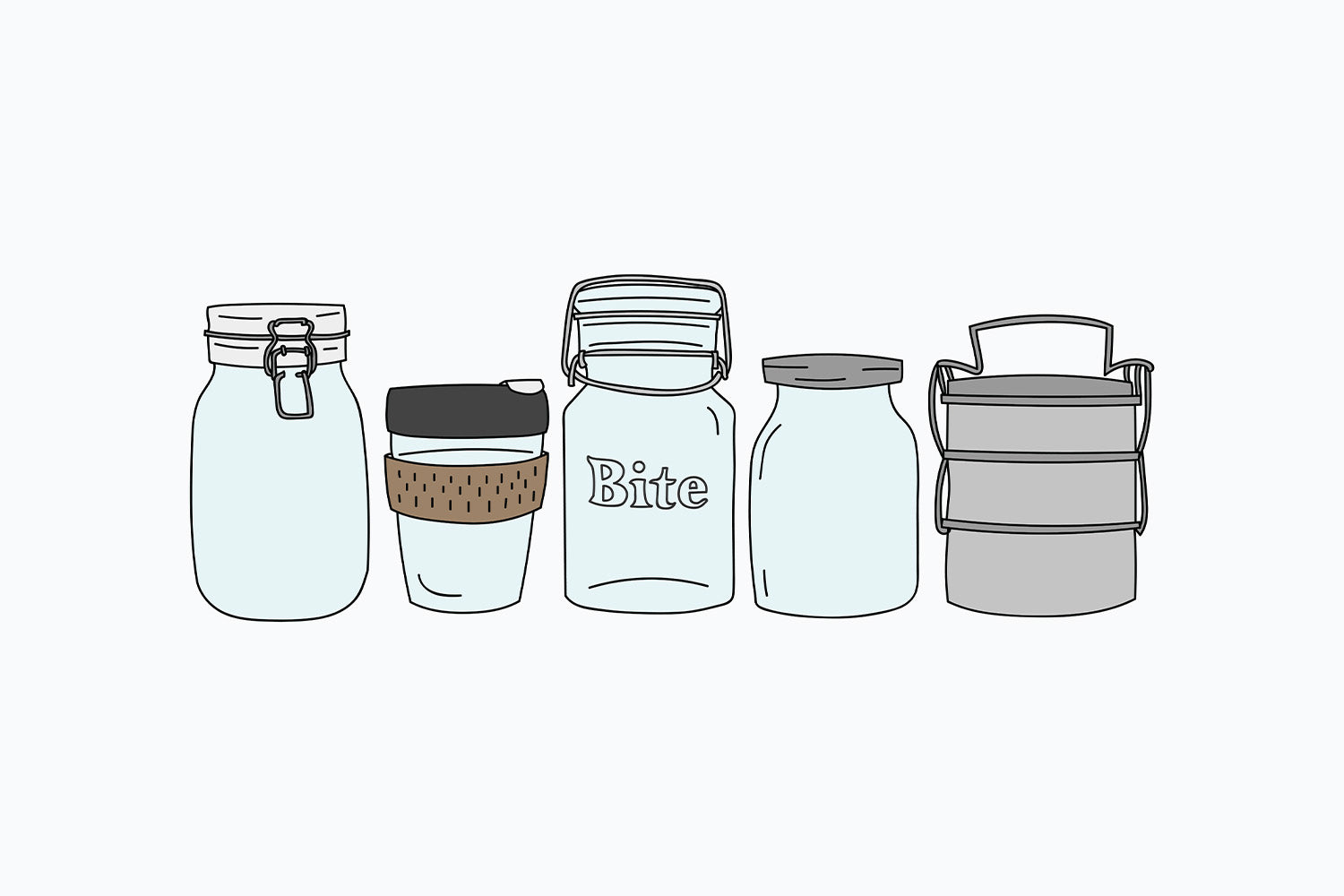A Guide To Recyclable Materials
With increasing awareness surrounding sustainability practices, many of us are trying to find the best ways to contribute to our environment and reduce our negative impact. However, it is easy to forget about the simple ways to practice sustainability.
Recycling is one of the most basic ways to mitigate the amount of waste we produce and reuse some of our limited resources.
You can recycle many common items, and recycling programs can be plentiful depending on your location. Even if a truck does not regularly arrive to pick up your recycling, there is likely a recycling facility nearby where you can bring those materials.
Rather than just using and wasting items that end up clogging landfills, the act of recycling gives us an easy and accessible method of environmental harm reduction. Recycling does require energy, but it is still a better option for preserving the earth’s limited resources and raw materials.
In essence, recycling is reusing materials to give them a second life as resources in a new product. Without recycling, these materials would have otherwise wound up in the trash, contributing to greenhouse gasses and pollution. Recycling means limiting how much we waste in an easy but meaningful way.
How Does Recycling Work?
For something to be recyclable, that product must contain materials that can be broken down and reused. Recycling is a three-step process that requires effort from you, recycling facilities, and manufacturers. When you recycle an item, it will go through collection and processing, manufacturing, and then remanufacturing or selling.
Collection and Processing
Collection and processing is an effort you and your local recycling facility make. First, you have to identify what is capable of being recycled. If you have any questions on that subject– which many of us do – we will go more in-depth on that a bit later.
Once you have identified what can and cannot be recycled, you will dispose of these materials in a designated recycling bin that your local facilities will then pick up curbside. If you do not live somewhere that offers curbside pickup for your recycled materials, there will likely be a recycling facility where you can bring them nearby.
Manufacturing
After the recycling facility collects your items, they will be sorted and processed. Once they break down into raw materials, manufacturers can purchase them, just like if you had never used them before.
After the recycled materials have been sorted, processed, cleaned, and purchased by manufacturers, it is time to create new items from those resources. In recent years, you have likely noticed an abundance of products containing recycled materials.
Remanufacturing and Selling
This stage is where much of the magic of recycling becomes readily apparent. Many people are shocked when they find out how many common items can completely transform. For instance, you can convert recycled newspapers into egg cartons, paper plates, or even cat litter. Meanwhile, facilities can transform steel or metal cans into parts for bikes or cars.
This last step puts some responsibility on the consumer rather than the manufacturers. Once items made with recycled materials are available, we must prioritize patronizing those items and the stores that offer them. This prioritization sends a clear message to manufacturers that recycled materials are preferable to the past's carelessly wasting ways. Money talks, so make sure yours is sending the right message.
Why Is Recycling So Important?
Recycling is so important because it provides a crucial substitution for the endless amounts of trash we produce as a society. While there may be some other methods of disposing of your items that are even better for the environment, few are as readily available or have as many facilities as recycling. By recycling, we all make small changes to our lifestyles to benefit the greater good and the health of our planet.
What Kinds of Materials Are Recyclable?
There are a few main categories of materials that you can recycle. When recycling, you should only include items on this list, as nonrecyclable materials could contaminate other items.
Paper Products
Paper products are some of the best-known recyclable materials out there, and items made from repurposed or recycled paper materials are common. Some of the paper that you can recycle are:
- Notebooks
- Newspapers
- Office paper
- Junk mail
- Envelopes
- Cardboard (including corrugated cardboard)
Some Glass
As a general rule of thumb, glass containers that you once used to house food and drinks are completely recyclable, but that is not always the case across the board. Keep an eye out for different symbols on your glass products, and when in doubt, do some research.
Glass bottles from Bite are also recyclable and repurposable, like the ones we use for our completely plastic-free Toothpaste Tablets.
Metal
You can recycle almost all metal, which is a huge relief when you consider just how prevalent metal is in our day-to-day lives. Brass, bronze, cast iron, copper, steel, and aluminum cans or tin cans are all capable of being recycled.
Some Forms of Plastic
It can be confusing to determine which types of plastic you can recycle, but numerical guides and symbols can make the process more straightforward. The most common form of recyclable plastic is PET, which is typically used in water bottles. This kind of plastic can also be reused for clothing, showing just how versatile the recycling process can be.
Remember that recycling is a great alternative to carelessly throwing water bottles into the trash or littering with them. This way, you can give the resources new life rather than polluting our natural environment. Recycling can reduce the harm caused by plastic bottles, but you can also take this a step further by reducing your use of plastic altogether.
Textiles
Your specific location may or may not accept textiles with regular recycling. Regardless, there are many ways to keep your textiles’ natural life cycle going. Donating them to those in need, giving them to thrift stores, or repurposing them into other valuable items (like rags), can help prevent the amount of waste we create and energy we use.
Which Items Are Non-Recyclable?
Understanding which items you cannot recycle is just as important as knowing which items you should recycle. Make sure to keep non-recyclable materials out of your recycling bin. It is worth noting that many mixed materials are not recyclable, even if the individual components are recyclable on their own.
Food Waste and Garbage
Unfortunately, you cannot recycle food waste. However, you can compost much of it, like coffee grounds, food scraps, and eggshells. Composting is possibly even better than recycling, as it allows you to return the materials to the earth and create new resources, all while using less energy.
Items Tainted With Food
Even if an item is paper and would otherwise be recyclable, many items contaminated with food waste or grease are no longer recyclable.
In some cases, you cannot recycle or compost used napkins or soiled paper plates. Some facilities do accept certain soiled items, like greasy pizza boxes, for recycling, and you should check with your local recycling facility on this.
Materials that can neither be composted nor recycled will need to be disposed of as trash, as many forms of food waste can contaminate other items in a batch of recycling. We can all reduce our usage of these disposable materials by opting for sustainable alternatives, like washable rags.
Kitchenware and Ceramic Products
Recycling facilities do not accept most kitchenware and ceramic products. If your items are still in working order, consider giving them to those in need or repurposing them for other uses around the house.
Windows or Mirrors
Remember when we mentioned that some kinds of glass are recyclable while others are not? Well, windows and mirrors are some examples of nonrecyclable glass. Instead, they should be carefully disposed of through other means or given away if possible.
How Do I Separate Recyclable Materials?
Depending on your specific location, you may or may not need to separate your recyclables. Some municipalities will do this for you, meaning that as long as you have a bin with recycling on your curb, it will be picked up and dealt with. In other areas, you will need to do this sorting yourself. The symbols and numbers on your recyclable materials will help guide you through the process, but in general, you should group plastics together, glass items together, and paper items together.
Guidelines for separating recyclable materials can vary from state to state, so you may need to look into the laws near your home.
Conclusion
While not perfect, recycling provides an excellent alternative to our culture of constant using and wasting, both in the United States and beyond. Instead of using and disposing of common materials, recycling allows those resources to be reused for future manufacturing purposes. Recycling allows us to reduce the amount of waste we produce, thus contributing to a greener planet.
Sources:
What Do Your Recyclables Become? | Maine.gov


